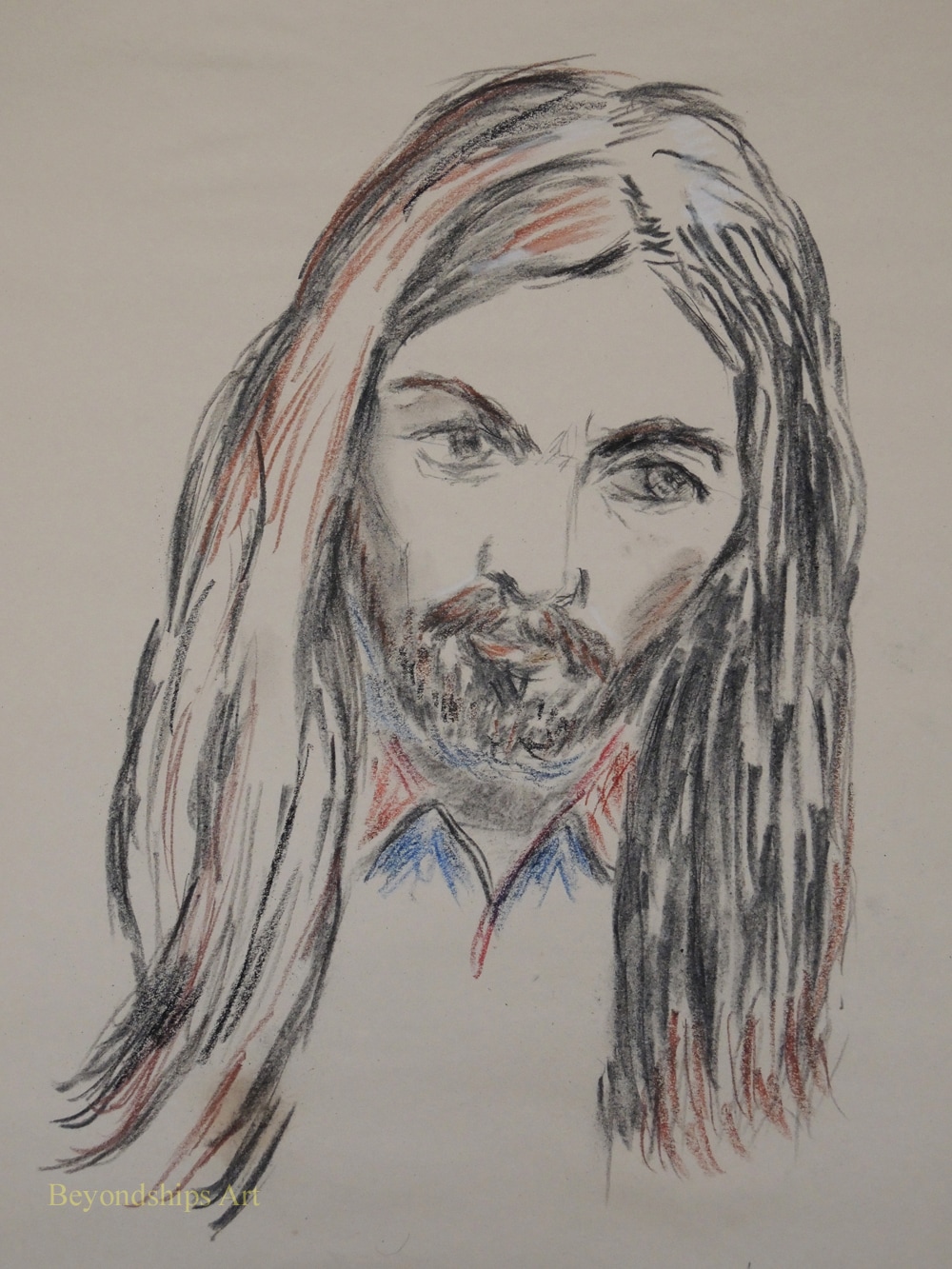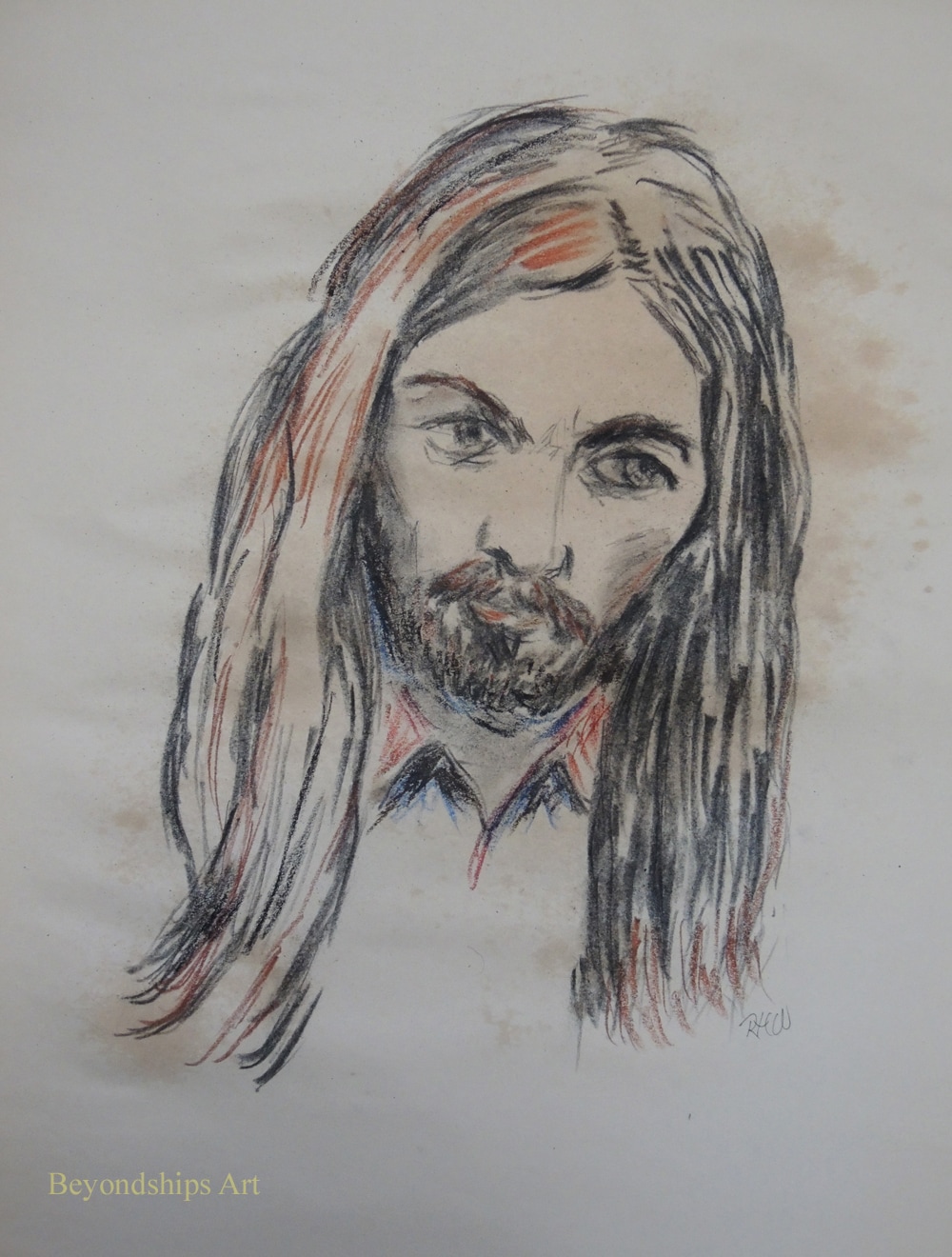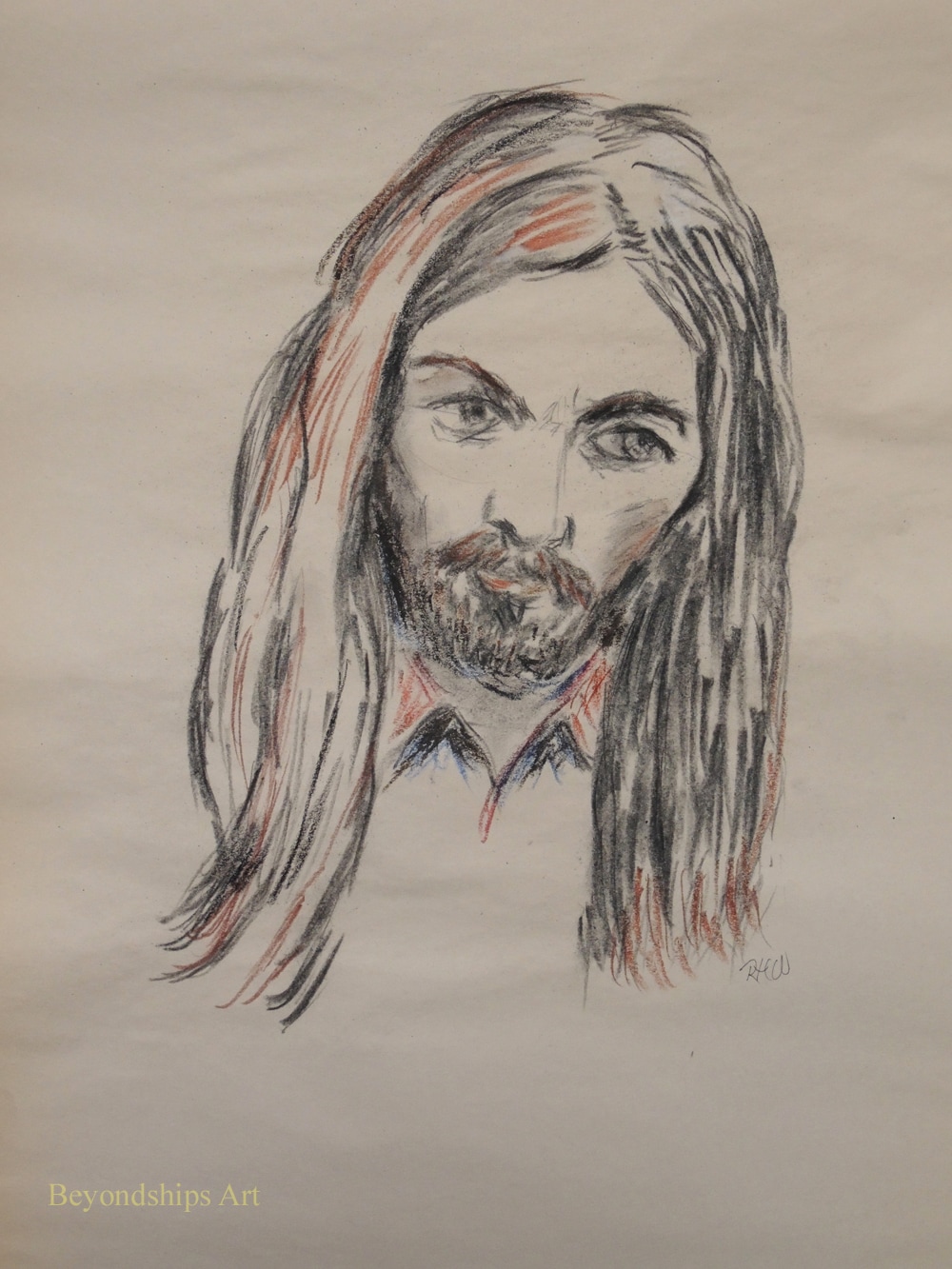|
I had an idea for a drawing so I grabbed an old piece of soft charcoal and a pad of newsprint paper and began to sketch out my idea. The sketch was coming along when I decide to use my finger to smudge one of the lines. To my horror, not only did the line smudged, it all but disappeared. Clearly, this image would not stand up to being stored or displayed. By this point, the drawing had progressed quite far along. I thought about copying it over onto a better piece of paper using another medium. But that would be a lot of work and besides I liked the effect that this soft charcoal was producing. So I decided to finish the picture and see if I could find some way of fixing the image to the paper. I use charcoal quite often but I usually do not apply fixatives. I don't like chemical odors and so rather than use chemical fixatives I just store my charcoal drawings as carefully as I can and just accept that there will be some deterioration in the image. In any case, I did not have any commercially available chemical fixatives in the house. When I was in grade school, I remember an art teacher using hairspray to fix a pastel. Do they still make hairspray - - I haven't seen a can for centuries. Also, that smelled awful when the art teacher used it back in ancient times. Somewhere along the line, I had read that Vincent Van Gogh and some of the Impressionists used skimmed milk as a fixative for their drawings. There was some skimmed milk in my refrigerator and so at the risk of having to eat dry corn flakes the next morning, I decided to experiment. There was no other downside because this drawing was not going to survive without being fixed. The article that I read about Van Gogh did not say how he applied the milk to his drawings. Taking a glass and dumping it on the drawing would obviously destroy the drawing as well as create a sloppy mess. Similarly, putting some milk on a paper towel and wiping or blotting it onto the drawing would damage such a delicate image. Spraying it on seemed to be the method most likely to succeed. All sorts of cleaning products come in spray bottles these days. But when I looked through the cupboard, all of the ones that I had seemed to be nearly full and it would be too wasteful to pour out their contents for the sake of a somewhat dubious experiment. Finally, I found a small sample size spray bottle that I had been given on by the spa on a cruise ship. It was almost empty so I cleaned it out. I also had no idea what formula Van Gogh used. Did he mix the milk with something else? Was it diluted? Inasmuch as I only remembered the article saying that he used milk, I just filled the spray bottle with milk straight from the milk bottle. Since I did not know how much milk to apply, I started with a few sprays. This had an immediate effect. A little bit of charcoal came off when I touched the drawing but the lines did not disappear as they had before the milk was applied. I sprayed it a few more times and next to nothing came off when I touched the drawing. The spray had a noticeable effect on the paper. Newsprint is not the best quality paper and apparently it does not like getting moist. There was some discoloration where the spray had been applied most heavily. However, the discoloration had disappeared by the next morning. There was also some slight puckering but I imagine that would not occur with better quality paper. I find it difficult to look at my works without finding something I want to change and so I was interested in whether I could modify the drawing after the milk had been applied. Not surprisingly, I could not intentionally smudge the charcoal to create shadows. However, I found that I could still make modest use of an eraser. Also, there was no problem adding additional lines not only with charcoal but also with Conte and Cray-pas. Overall, I viewed this as a successful experiment. The picture was preserved and it was an easy process with no odor or clean-up required. Portrait of George. Left: The drawing before applying the milk fixative. Middle: The drawing just after the milk had been applied. Right: The drawing the day after the milk was applied.
|
AuthorRich Wagner is a writer, photographer and artist. Archives
November 2018
Categories
All
|



 RSS Feed
RSS Feed